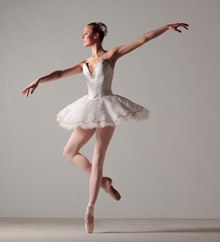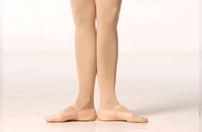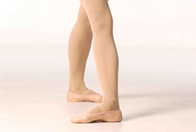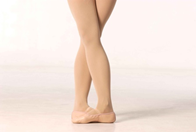Ballet – the seemingly gentle and weightless sport
Stress Fracture and The Female Athlete Triad in Ballet Dancers
In this article, I will talk about the 2 most common conditions experienced in ballet dancers – stress fractures and osteoporosis. Most of you might think ballet is a very strenuous sport and hence, it’s unthinkable how any ballet dancer can suffer from osteoporosis. This article will give you an in-depth explanation how this condition can happen in these athletes.
Ballet – The seemingly gentle and weightless sport
(Hardy, 2012)
Ballet is an artistic form of dance that looks elegant and dancers appear weightless during performance. However, it is a very physically demanding sport and requires rigorous training to achieve that beautiful effect. Ballerinas have a high prevalence of injuries, ranging from 48% to 84% of them sustaining an injury throughout their dancing career. Most of these injuries are due to overuse from the large amounts of training and one of the most common types of injury is stress reactions or stress fractures. In ballet dancers, about 56.5% to 63% of stress fractures occur in the metatarsals, which are the bones that form your forefoot. The basic movements of “turnout” and pointe work form the basis of ballet, which can contribute to metatarsal stress fractures in ballerinas.
Basic Movements and Biomechanics in Ballet
Turnout: The most fundamental position in ballet is called the “turnout”, which is the sum of total outward rotation of the entire leg ie at the hip, knee, shin, ankle and foot. All ballet movements start and end from 5 basic turnout positions shown below:
First position
Second position
Third position
Fourth position
Fifth position
Traditionally, the amount of turnout that is thought to be aesthetically pleasing has been identified as 180° of outward rotation of both legs combined: 60% of the total turnout range occurs at the hip, 20 to 30% comes from the ankle and foot, and the remaining range is contributed by the shin.
In the turnout position, a ballet dancer goes into demipointe or pointe by performing either:
A relevé, which is raising of the heel and rolling through the foot to lift the body up, or
A demi plié, which is flexing the knees while allowing the heels to remain on the floor, followed by a relevé.
A demi plié (Unknown, n.d.)
Demipointe: Demipointe is the position where the dancer is standing on her metatarsal heads. In this position, ballerinas need to bend their big toe back about 80° to 100° to achieve a full-demipointé. The foot is pointed downwards fully and body weight is distributed evenly between the base of the first 2 toes.
Foot in demi pointe
X-ray of foot in demi pointe
Ballerina performing a retiré (Nilsson, 2001)
Enpointe: “En pointe” refers to the position of the foot in a pointe shoe, where the heel is raised, foot fully pointed down and the dancer stands balanced on top of her toes, primarily on her first and second toes. The pointe shoe supports a closed pack position of the foot, which plays a major role in stabilizing the foot while in the en pointe position. When a female ballet dancer has trained seriously for at least 4 years and has developed sufficient strength and balance in her whole body, such that she can maintain the turnout at the hip with the pelvis and ankle well-aligned when performing a retiré on demipointe, she is ready to start en pointe training, i.e. achieving good turnout is a pre-requisite. Retiré is the raising of the pointed foot of the fully turned-out leg until it is about 90° to the body with the toes in line with the kneecap of the supporting leg.
In ballet, a high medial arch in the pointed foot is termed “high instep”. In the en pointe position, a high instep is essential to allow the shin, ankle, foot and toes to be aligned in a vertical line, which is the optimum line of gravity for weight-bearing in the ballet dancer.
NB: Male ballet dancers do not normally perform pointe work.
Foot in en pointe
X-ray of foot in en pointe
Biomechanical Causes of 2nd Metatarsal Stress Fracture in Ballet Dancers
In the en pointe position as described earlier, all of the ballerina’s body weight is supported by the tip and the first and second toes, which increases the strain to these metatarsals. With the foot fully pointed, the distal part of the leg and hindfoot form one long lever with stress concentrated at the junction between the base of the toes and the foot, hence forming stress fractures at the base of the second metatarsal, which is the most common site of stress fractures in ballet dancers.
Impact of Menstrual Cycle and Diet on Stress Fracture Development in Female Ballet Dancers
Ballet is a female-dominated aesthetic sport that requires low body weight or low body fat and thinness for performance and aesthetic reasons. As such, female ballet dancers are predisposed to an interaction of 3 medical syndromes collectively known as the “Female Athlete Triad” – comprising low energy availability, amenorrhea and osteoporosis, which affects not only dancers but any aesthetic sport that requires leanness such as gymnastics as well.
The Female Athlete Triad
Energy availability is the dietary energy remained for bodily functions after exercise energy expenditure. Low energy availability can result from decreased calorie intake or excessive energy expenditure in the form of intense exercise. When there is a deficit in energy availability, the amount of energy used for physiological functions such as thermoregulation, growth and reproduction is reduced. This is a compensation strategy by the body to try and restore the energy balance, resulting in weight loss or metabolic hormone alterations. In female athletes, this process causes the pituitary gland to secrete luteinising hormone at incorrect frequencies, which shortens the luteal phase of exercising women, hence disrupting the menstrual cycle. As a consequence, the associated level of oestrogen decreases, which increases bone resorption. Over long periods of time where the menstrual cycle is disrupted, it causes amenorrhea which is defined as absence of menstrual cycle for more than 3 months, the chronically low levels of oestrogen can cause a decrease in bone mineral density due to the lack of calcium uptake and increased bone resorption, leading to an increased risk of stress fractures in the female athlete. Across the general population and various sports, ballet dancers have the highest rate of amenorrhea, with up to 59% of them suffering from this condition. Prolong decreased bone mass density eventually results in osteoporosis, which is a high risk factor for stress fractures in female athletes.
In pre-pubertal female ballet dancers, low body weight as a result of intensive training may cause delayed menarche. This is because the resulting low energy availability affects levels of metabolic hormones that may inhibit the secretion of gonadotropin-releasing hormone (GnRH). This hormone is required to stimulate the pituitary gland from releasing luteinsing hormone needed to trigger the menstrual cycle. The exact mechanism of how the GnRH secretion pathway is disrupted is still unknown.
Management of stress fractures in the female athlete:
To manage stress fractures in the female athlete, we need to look at her wholistically instead of focusing only on the fracture sites. This requires a multi-disciplinary approach consisting of a medical team of the sports physician or obstetrician-gynaecologist, sports dietitian, sports psychologist, exercise physiologist and physiotherapist. The primary goal of treatment is to increase energy availability and increase bodyweight to normalise the menstrual cycle, which in turn will regulate oestrogen production and hence, increase bone mineral density. The doctor will first do an examination to determine the diagnosis of the female athlete triad, and then work out a treatment plan. Non-pharmacological treatment is usually the first choice of intervention, which includes having the sports dietitian plan an appropriate diet to increase energy availability and/or the exercise physiologist to modify the athlete’s training regime depending on competition seasons so as to reduce energy expenditure. The physiotherapist is involved when there are associated musculoskeletal injuries that require hands-on treatment. Often, the sports psychologist is included in this multi-disciplinary team as these young female athletes can suffer from anorexia or bulimia in their quest to achieve a leaner body shape.














